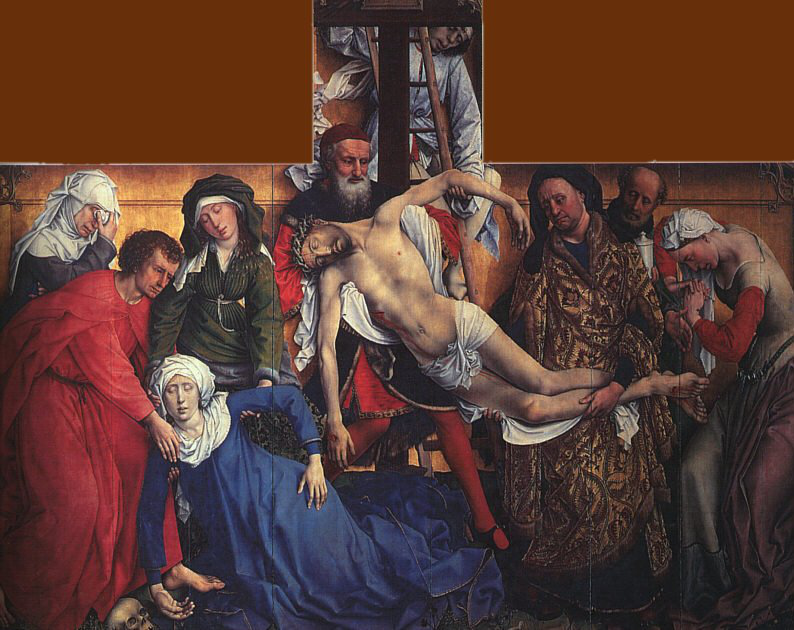
Biography
Rogier van der Weyden (originally Rogier de la Pasture) was born in Belgium where he spent his life and created his masterpieces. As an artist, he was successful and well-known in his lifetime.
The painter was born and upbringing in the surrounding of the class of craftsmen and merchants. He must obtain the university education and began creating his arts at the age of 27. He settled in Brussels where his wife was from and had become a city painter.
Rogier van der Weyden had quickly become popular and started instructing others, teaching them the mastership of painting. He had influenced the list of artist that later had become really famous themselves. The painter received lots of commissions in his life and was an influencer until his death.
Key ideas in painting
The painter was working in the Northern Renaissance and had his own well-established and recognized style, which is simple and expressive. His paintings were mostly on the religious thematic and express his attitude toward the world. He was the one who started the new iconography and reformulated the subject of several Christian figures.
Paintings made by Rogier van der Weyden
As a talented artist, Rogier van der Weyden had created a list of drawings that made him well-known in the world. One can name Saint Luke drawing the virgin Mary, Deposition, portraits of famous people and may others composition. Some of his famous paintings are worth to be discussed in more details.
 Deposition
Deposition
Deposition is an artwork that was created by the painter in 1435. It was made in the style of Northern Renaissance and for its genre is a religious painting. Nowadays, it can be seen in the Prado in Madrid.
If to examine this work, one can see Jesus, who was just taken from his cross and are held by Joseph and Nicodemus. We can notice other people surrounding Jesus but we could not feel the crowd and hear noises. The author created an atmosphere of isolation and intimate condition.
 Portrait of a Lady
Portrait of a Lady
Portrait of a Lady is also one of the most popular paintings created by Rogier van der Weyden. It was painted in 1460 and was made in the genre of the portrait. It is an oil-on-oak-panel painting and its specifics are hidden in geometric shapes. The artist manages to make a contrast between dark and light parts of the composition, making the picture more vivid. Weyden stack to the Gothic ideas while creating this composition and made it brightly recognized by the manner of painting the traits of the woman’s face.
 Man holding book
Man holding book
Man holding a book was created by the painter from 1440 to 1449 and was completed in the style of Northern Renaissance. For its genre, the painting is a portrait and is an oil panel composition. Today, it can be seen in London in the Courtauld Institute of Art.
This painting brightly shows the style that the artist always applied to his compositions. The contrast between the dark and light has created a specific atmosphere and made the painting more impressible. Weyden did not accentuate his attention on the clothes but highlighted the face of the person holding the book making clear what is the most important in this composition.
 Seven Sacraments Altarpiece
Seven Sacraments Altarpiece
The seven Sacraments Altarpiece is a triptych created by the author from 1445 to 1450 specifically for the church and can be seen today in the Royal Museum of Fine Arts, in Antwerp. It shows the seven sacraments of the church picturing baptism, confirmation, confession, an ordination of a priest, marriage, and the last rites.




